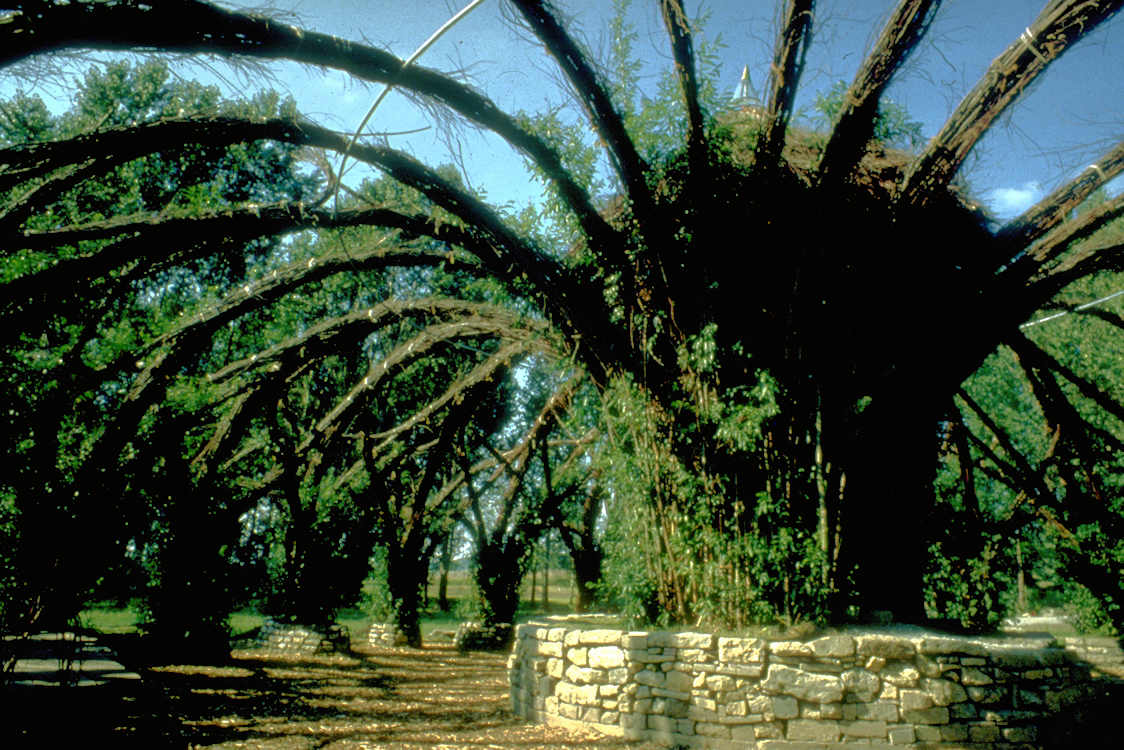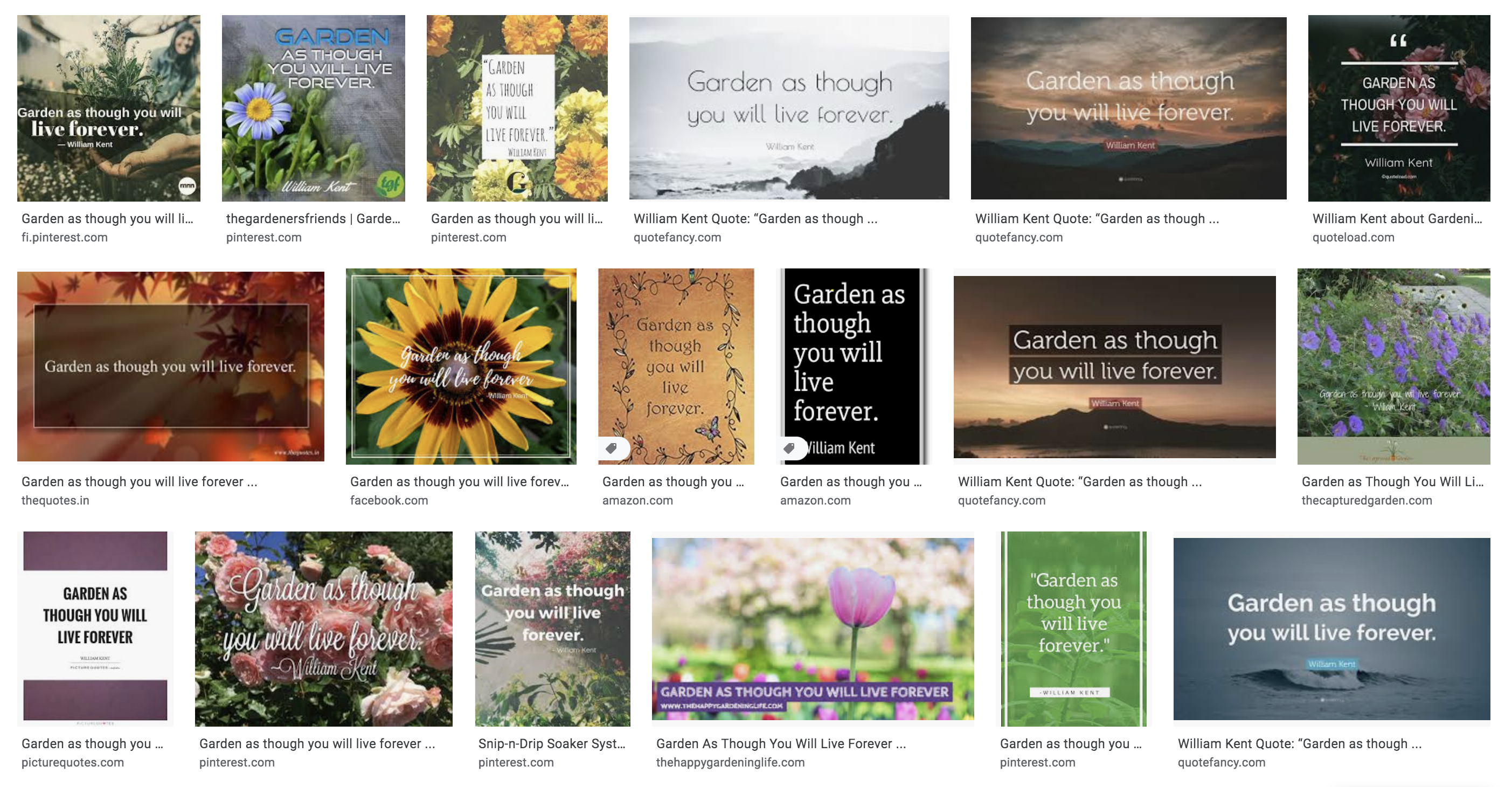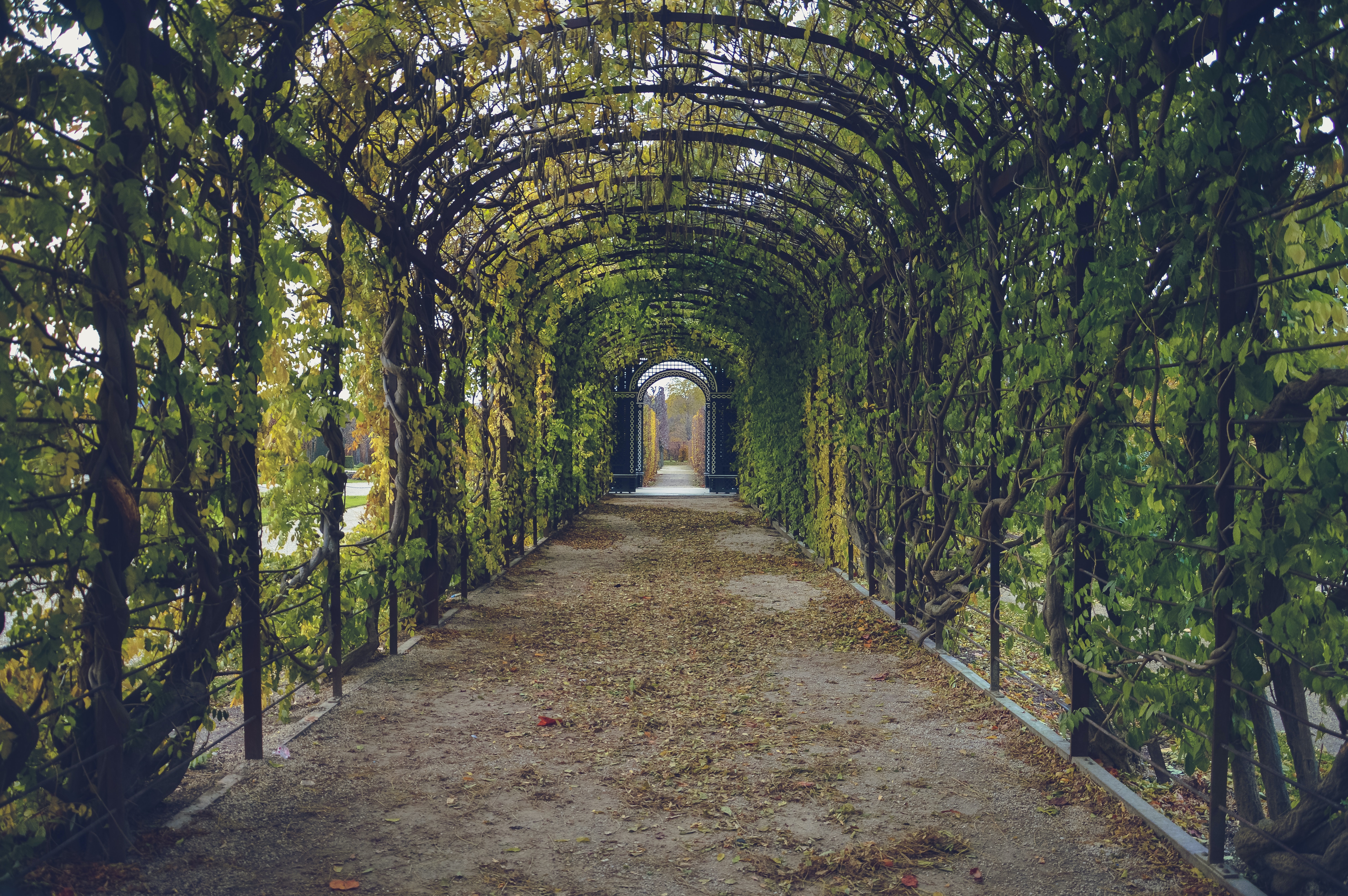Editor’s note: This is one of a series of Toolshed essays that considers the “garden”– what it has been; what it is; what it can be. These essays were written or commissioned as part of a process of considering the Toolshed Garden space at Basilica Hudson and how to develop it.
The Toolshed garden will be a kind of shelter—as all gardens are.
What follows is a collection of thoughts on some of the ways gardens can be sheltering or have been associated with the arts of shelter, expanding out from the literal spatial structures of plant life, to garden constructions and land use, to more subtle ways gardens can offer psychological and spiritual protection, and even community resilience.
Each of these sheltering capacities provokes a different set of questions that can be asked of Toolshed’s garden.
The connection between both ends of this spectrum is crucial— between the physicality of gardens (e.g. access to actual land or other space to practice gardening) and their more intangible social good. If we limit the celebration of gardening to the personal benefits accrued to individuals—often in the form of wealthy landowners in exurban pastoral settings—we miss a huge part of what gardening means for other communities. Alongside large numbers of people staying at home and suddenly having time to garden, the other massive social change to happen in recent months is the US’s largest mass movement of people rising up against systemic racism. Though this kind of activity is seldom seen the same way, we might also consider how the cultivation of collectivity and solidarity, of empathy and even rage, can have benefits, for individuals and communities, that are at least as significant as the cultivation of backyard vegetables.
Taking shelter, or making it, is an activity usually done with others. (Even the private “sheltering” practiced during the pandemic is in an important sense for others.) There’s something counterintuitive in the idea of a personal or single-use shelter, in bunkers and the resulting “bunker mentality.” Shelters seem to assume a certain collectivity, a shared future. So an exploration of some of the ways gardens can be shelter might help to suggest some of the broader potentials in the practice of gardening.
Plants as shelter— The things that grow in a garden provide shelter for other creatures. In obvious ways that are easy to understand—think of an owl living in a tree hollow—and in many subtler ways, some of which we are only beginning to understand.
The structure of diverse rainforests is described using terms that sound architectural and suggest each layer’s sheltering role. The “canopy” layer of the upper parts of trees, full of insects, birds, reptiles and mammals; the “understory” or dark, cool environment under the canopy; and the forest “floor”, where most insects and the largest animals live. This last layer is sometimes called the “cryptosphere” (crypto- from the Latin for “hidden”) because so much of the life here is invisible and still unknown. Here it is primarily trees that make up the architecture for an astounding diversity of other organisms. The plants in a garden do something similar on a smaller scale.
How might Toolshed’s garden provide habitat for other inhabitants of the Basilica Hudson grounds—both known and unknown? How will these layer upon each other, leaving space for the not-yet-known, and even the unknowable?
Architecture in and of gardens— Some gardens, including the Toolshed Garden that is currently being designed, incorporate constructions for seating, walkways, and shade, like arbors, pergolas, and gazebos. We can also think of the more basic elements of a garden as becoming architectural: foundations, raised beds and other kinds of containment, fencing and other wall-like border elements, structures for support and climbing like trellises and stakes, and so on. Cold frames, or plastic low tunnels or “polytunnels”, may be installed to protect garden beds from frost and wind. When some gardens get roofs, they can even become “houses” in their own right: an especially high tunnel becomes a “hoophouse” if enclosed by plastic, or if by glass—a greenhouse.
There are also times when the plants themselves become the architecture, as in living walls or hedges grown as boundaries, privacy screens, or wind breaks. Certain species, like boxwood, are particularly suited to this kind of ongoing shaping. When the shapes get less linear and more ornamental, it becomes topiary, a kind of living sculpture. Vining plants can combine with trellises to form semi-permanent walls and archways. And trees like willow can be pruned and shaped into complex structures that grow into their own armatures, as in the “willow palaces” created by German architect Marcel Kalberer and the Sanfte Strukturen group.

The architecture of the “willow palace” is based on an ancient Sumerian technique of bundled reed construction. Which is another way gardens can be architecture: by growing and harvesting the materials that are used to make a shelter—a time-honored tradition, used in many vernacular architectures.
How will the constructed interact with the grown in the garden at Basilica? Which local materials will the garden use, and which will it create?
Gardens in relation to architecture— We might also consider the ways gardens relate to adjacent architecture. Most suburban American houses are surrounded by a specific type of household-scale monocrop garden known as “lawns.” (A 2015 study showed grass is America’s single largest crop, covering an area three times larger than any other irrigated crop, and requiring similar amounts of water and fertilizer.) Parts of a yard may also become a “backyard garden.” In places without yards, container gardens sprout up along building edges, on balconies, fire escapes, and window sills. Some people design lightweight frameworks for existing windows and call it “window gardening.” Some manufacturers make projecting windows with glass on four sides and a bottom platform, and call them “garden windows.” More and more commercial buildings are installing roof gardens or green roofs for their capacity to regulate temperature and hold water, among other benefits. Land devoted to handling runoff from a nearby building can become a “rain garden.” And other types of gardens may be defined by where they occur, like entry areas, courtyards, breezeways. Or by where they don’t occur, as in community gardens or European “allotments” located in clusters separated from housing.
How will Toolshed’s garden relate to other features of the Basilica Hudson site, and to other nearby buildings? And what about other neighboring infrastructures of transportation, energy, water, and waste (railroad tracks, easements, streets, driveways, parking lots, a large solar array, drainage areas, commercial dumpsters, compost/biogas trailer, etc.) And how will the garden’s design be affected by its own needs for energy, water, waste, storage, and maintenance?
Gardens as landscape architecture— Finally, there is landscape architecture, when an entire landscape becomes planned like a garden, or crafted like a painting. The tradition is often traced back to the English architect William Kent, who is sometimes called the “father of modern gardening.” Much of the way we experience gardens and parks—even what we think of as a “landscape”—comes from the English garden and otherly painterly approaches to land use. Kent once said “Garden as though you will live forever.” The quote has been made the subject of countless inspirational images, in imagery reminiscent of the once-popular “MOTIVATIONS” calendars:

Though the informal garden style Kent represents was a kind of revolt against the classical “architectural” style of garden, we might question the privileged origins of this form of gardening among the British and French aristocracy, and find ways to dismiss Kent’s popular sentiment. We might also note the Eastern origins of Kent’s style in something like the aesthetic of sharawadgi which favors organic, naturalistic appearances over rigid lines and symmetry.1 And we could locate alternative lineages of what we call “gardening” among Black, Indigenous, and people of color.
But Kent’s ideas are useful for thinking about the temporality of gardening, or the scales of time that are implied by a use of space. In a time when human species extinction is increasingly considered a possibility, the quote takes on a slightly more ominous and even radical tone. How fitting, then, that Kent and others often incorporated Gothic ruins into their landscape designs. Indeed, it was Kent who also said this: “(If) a garden is to be a world unto itself, it had better make room for the darker shades of feeling as well as the sunny ones.” In practice, he was said to not be above planting a dead tree in order to achieve a desired effect.
What conditional statement will complete the command of Toolshed gardeners, to garden “as though….” As though life depended on it?
What “shades of feeling” will Toolshed’s garden incorporate? What future will Toolshed’s garden design anticipate? What quantity of living—short of “forever”—will its designs imply? And what conditional statement will complete the command of Toolshed gardeners, to garden “as though….” As though life depended on it?
Shelter for whom, from what?
In recent months, as many Americans have been asked to “shelter in place,” this capacity of gardens has been duly noted. Some of the most widely circulated news outlets offered variations on the theme: The New Yorker’s The Tonic of Gardening in Quarantine, The Washington Post’s The garden has lessons for us in this quarantine, if we are willing to stop and listen, and NPR’s Pandemic Gardens Satisfy A Hunger For More Than Just Good Tomatoes, among many others. One only has to read the headlines to get the gist of the argument.
Most of these pieces include claims about the mental health benefits of gardening, along with some vision of respite from the hectic pace of modern life or the doldrums of social distancing. One might expect such sentiment to be less newsworthy for publications geared towards people who were already living in the country, or already spending time outside, but even these got into the act: Country Living’s How Quarantine Taught Me to Love Gardening and Outside Magazine’s The Pandemic Has Turned Us All into Gardeners. Perhaps People Magazine’s headline gets it best: Pandemic Gardens Are Trending.
More people getting out and gardening is certainly a good thing. Gardeners may experience different scales of time, connections to nonhuman life, among other hard-to-measure benefits.2 Gardeners may also be contributing to more resilient local food systems, soil health, among other good and worthy things. But gardens—or gardens as shelter—can be so much more.
What got less circulation than feel-good stories on gardening as soulcraft was a longer article written by Ashley Gripper and published by Environmental Health News, a small nonprofit dedicated to driving science into public discussion and policy on environmental health issues, including climate change. The piece’s title contains its own argument: We don’t farm because it’s trendy; we farm as resistance, for healing and sovereignty . (In case the article’s lead photo depicting Black people farming doesn’t indicate to readers the identity of the “we” in its title , the subtitle clarifies: “Farming is not new to Black people.”) Though the piece had been weeks in the making and probably already scheduled for publication, it happened to be released just one day after the protests over the police killings of George Floyd began in Minneapolis—protests which swept the nation in the subsequent weeks. It may come as no surprise that, the major news outlets mentioned in the preceding paragraphs did not release a slew of opinion pieces on how political organizing and public protest is a balm to the soul.
Gardeners may experience different scales of time, connections to nonhuman life, among other hard-to-measure benefits. Gardeners may also be contributing to more resilient local food systems, soil health, among other good and worthy things. But gardens—or gardens as shelter—can be so much more.
In the article, Gripper, a PhD candidate at Harvard whose work explores the impacts of urban agriculture on the mental, spiritual, and social well-being of Black communities, notes the irony that her ancestors, as enslaved Africans on Southern plantations, were essentially forced to farm. Contemporary urban farming is framed as a way to regain ownership over food systems—a way which maintains a continuity with Black postbellum agricultural roots despite brutal terror campaigns, complex migrations, and the longstanding discriminatory policies of the USDA. Gardens, in this sense, can provide shelter in ways that go beyond individual mental health—they provide platforms for survival and resistance.
A garden may be a shelter in the sense of a sanctuary, a place of escape, survival, or rest, and it may be a place of convening, where people come together, culture is generated and shared, and lifeways are protected.
Shelter and the category of “garden”
These are some literal connections between gardens and architecture. Still, it can be somewhat counterintuitive to think of gardens as shelters. Gardens seem to require the opposite of shelter. They need exposure—to sun, rain, air. When just one of these is provided artificially, through lighting, plumbing, or ventilation, we usually still call something a garden. But there’s a subtle difference that begins to set in the more such inputs are added, and the more permanent they are. So that when all three are built for it, or built around it, in what amounts to its own shelter—a garden begins to seem like something else.
When does a garden become a farm? A factory? When does a farm itself become a factory farm? When does planting become a plantation? At what point does farming lose its “hobby” status? When does agriculture go from subsistence to traditional to intensive? How deliberate does gathering have to be before we begin to call it agriculture? The answers may have something to do with shelter.
And these are not trivial questions. They come to bear on who we recognize as our own, as Kin, both geographically and historically—among those who are our neighbors on the land, and those buried under it, in the archaeological record of human culture. A common element of the genocides that have occurred across this continent and across the globe was the unwillingness of colonizers to recognize differences between Indigenous agricultural and land use practices and their own.
These are just some of the considerations that might inform the design of the Toolshed Garden at Basilica Hudson. Regardless of what grows in it, and what shelters these provide, the Toolshed Garden will also be a space that is public. And public space can be another kind of shelter: a protected place for ideas, debate, gathering, and protest. We ask ourselves: what will this garden shelter? Whose survival will the garden support? And in order for that to happen, how—and what—must it become a platform for resisting?
Notes
| ↑1 | The concept influenced Kent and his 18th-Century contemporaries after the publication of Sir William Temple’s essay Upon the gardens of Epicurus and other reports from China. Scholars still debate the term’s cultural and linguistic origins. |
|---|---|
| ↑2 | Scientific studies on “nature-assisted therapies” have corroborated claims of the mental health benefits of time spent outside. |
